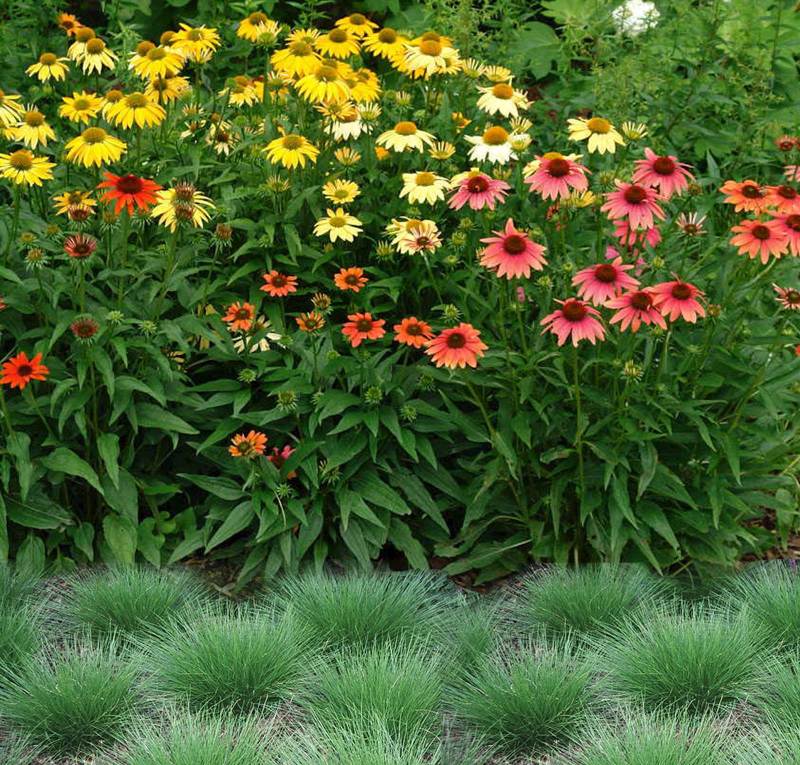Plants That Complement Each Other – Thousands of years ago, corn, beans, and pumpkins grew together in the forests of Mesoamerica near present-day Oaxaca, Mexico. Each plant has a symbiotic relationship that benefits each other. As agriculture replaced hunter-gatherer lifestyles, indigenous peoples cultivated these and other plants for food, medicine, and animal feed. Seeds were exchanged for other goods along a vast system of trade routes and trading posts across the Americas. For thousands of years, corn, beans, and pumpkin seeds traveled north, constantly adapting to local growing conditions. They have been growing together for thousands of years, but the Haudenosaunee (Iroquois) call this group of plants the “Three Sisters.” The story tells about the strength of three native sisters as they live together. Companion Planting Some plants are mutually beneficial and do well when planted together. (On a side note, some hate each other, but that’s a post for another day!) Planting together means growing food to help each other, which is the science and ecology behind Sister Three. The height of the grain supports the bean vines, which bind the straw for greater efficiency. Beans fix nitrogen, meaning they take it from the air and transfer it to the soil, making nutrients available. Beans eat nitrogen-rich corn and squash. Large pumpkin leaves act as ground cover, provide shade, conserve moisture and suppress weeds. Their pointed stalks repel predators.
These plants not only complement each other in the field but are also good food for humans. Corn is a carbohydrate, beans are rich in protein and amino acids that complement corn, and pumpkin is rich in vitamins and minerals. Many staples like Suktasha use these ingredients together to create the perfect dish. How to Plant a Three Sisters Garden There are many ways to plant three sisters in your garden, but what you choose depends on how much space you have. I’ll describe the simplest version here, although that link shows a larger garden. No matter which method you use, don’t apply them all at once. Choose tall varieties of corn, beans, and wild squash. Make a 36 inch wide mound of good soil in your garden. Flatten the top and place 5-6 corn seeds in a 6-inch diameter circle in the center. After about 2 to 3 weeks, when the corn is 6 inches tall, plant the bean stalks in a circle 3 to 6 inches from the corn. After about a week, plant the pumpkin seeds on the side of the hill. Use equal spacing. , and thin to strong plants, because each other is needed for sowing. Remove weeds before plants grow. Vines or pumpkin vines must be trained from the center so that they do not shade the corn so that they receive enough sun for a good harvest. On Maori Gardening by William Voice Weaver. And thanks to the farmers who went before you.
Plants That Complement Each Other

Want to be the first to know about our new products and more? Sign up for our Nature Trail newsletter.
How To Plant A Three Sisters Garden
Nature’s Way has been committed to producing only organic food products since 1985 and that will not change. As a leader in organic products, Nature’s Path believes that every time you choose organic, you are voting for a better and more sustainable food system for all of us. There are certain rules when it comes to gardening, and that’s especially true when it comes to color—no matter what. There are as many ways to use color in the garden as there are white. in
Knowing a little about how the eye sees color will make it easier to choose eye-pleasing combinations. A color wheel is a great tool for understanding the relationship between different colors.
Colors appear on the color wheel in the same order as when the sun is divided into rainbows. Here are some ways to use the color wheel to display beautiful color combinations. Experimenting with colors as described below – similar, complementary, solid and contrasting – is a great way to find new color combinations that will appeal to your creative eye.
Colors that are close to each other on the color wheel are called similar colors. A color combination can be three colors, such as red, orange, and yellow, or just two colors, such as blue and purple. Similar colors go well together and create visual harmony.
Companion Plants To Grow With Ferns
Complementary colors are directly across from each other on the color wheel. When two complementary colors are combined, they create visual tension because they are so different from each other.
Examples of complementary color pairs are yellow and purple, orange and blue, and red and green. Using complementary colors in the garden will show confidence, strength and enthusiasm.
A monochromatic color scheme is one color that is lighter or darker. For example, red, pink and rose, navy blue, cobalt and sky blue. The use of monochromatic colors in the garden soothes the eyes and creates a sense of calm.

This color scheme combines the strengths of complementary colors and the combination of similar colors. The model is orange and yellow and purple. Wondering what to pair with spring-blooming bulbs for a spectacular display, or which plants hide bulbous leaves when dormant? You can find ten answers here!
Reader Photos! Harriet’s Garden In Maine, Revisited
) Like a Wedding Party® Maid of Honor is one of the first plants to bloom in early spring, along with spring bulbs.
A beautifully balanced garden plant that blooms from the first days of spring to the last days of autumn. With a mix of bulbs, annuals, shrubs and flowering plants, you’ll have something new every week.
Some people avoid planting spring-blooming bulbs because they don’t know where to plant them or they don’t like how they will look when they are dormant for the season. In this article, you’ll find tips on how to solve these two problems, so when it’s time to plant bulbs this fall, you’ll know how to use them in your garden.
If you plant a bag of summer bulbs alone, without a plant, they will appear alone in the spring. Bulbs, trees and shrubs should work together to complement each other with colorful flowers and foliage.
Companion Plants To Grow With Petunias This Season
In this photo you can see a cluster of tulips sandwiched between a Brunnera plant and bleeding hearts. Pink and white tulips work beautifully with silver leaves and blue flowers. Also, when the tulips stop and go dormant, the surrounding plants hide the brown bulbous leaves.
When choosing spring-blooming partners for bulbs, look for plants that bloom in the most diverse seasons. Also consider the height of the two flowering plants so they don’t overlap each other. Space them far apart so they don’t crowd, but close enough to keep them as a pair. If it’s a species that returns annuals, choose annuals that don’t require much division to avoid damaging the bulbs.
Early blooming plants like azaleas and rhododendrons combine with spring bulbs to create a vibrant burst of color to kick off the new season with a bang. Their pink, pink, purple or white flowers complement the colors of the bulbs, especially sunny yellow and deep purple.

When you grow flowering varieties like Perfecto Mundo®, you’ll have spring, summer and fall blooms. If you live in the north, azaleas and rhododendrons bloom well in spring and make good companions.
Zucchini Companion Plants: 27 Plants To Grow With Zucchini
If you want a spectacular spring in your garden, place a blanket of bright colors around your bulbs. Creeping phlox and their hybrid cousins have small, thick discs of finely-grained leaves covered with pink, purple or lilac-purple flowers that begin in mid-spring when they bloom in spring. Daffodils, hyacinths, muscari, fritillaries and early tulips make good companions for spring phlox.
The first plant to welcome bees to the garden is the lungwort. every week






